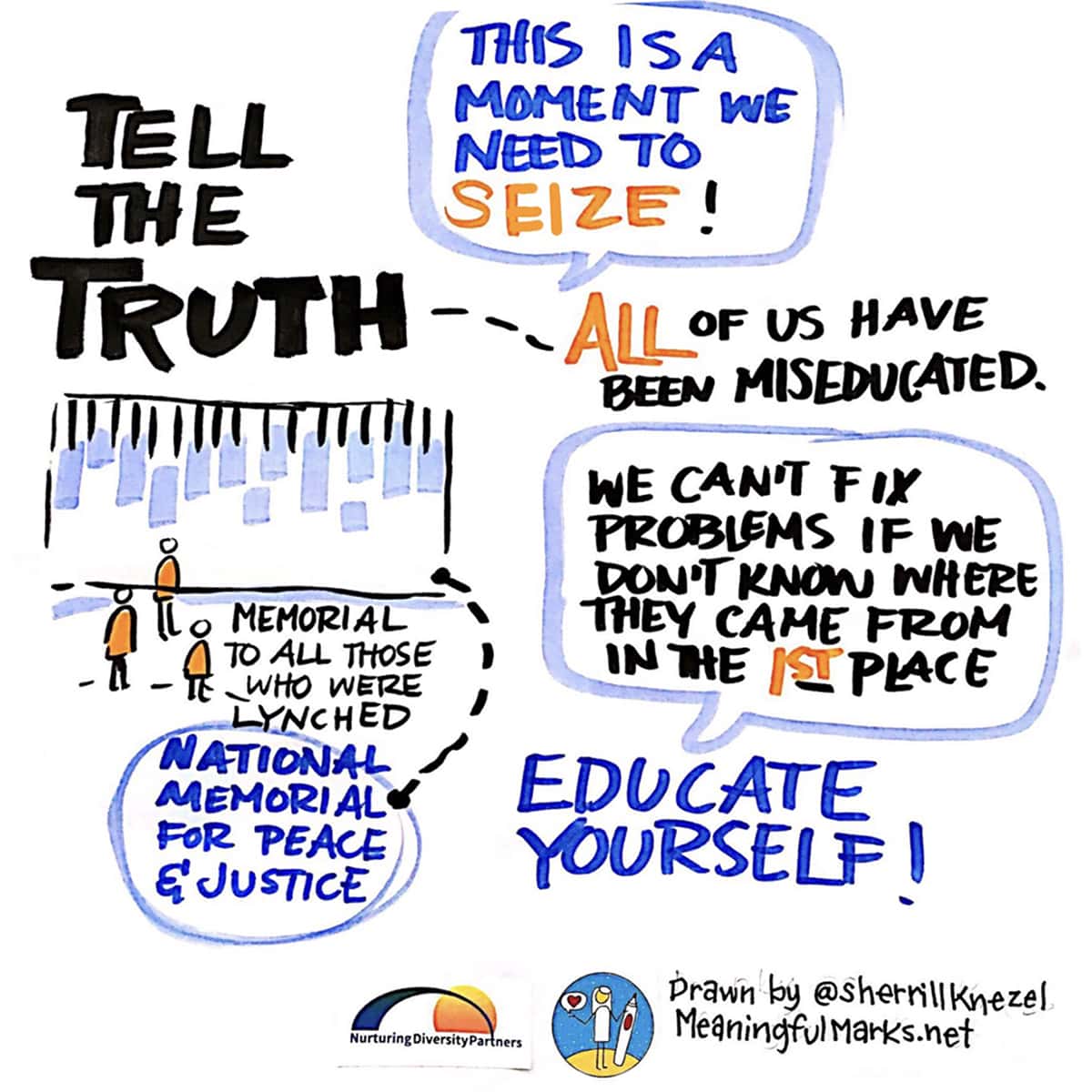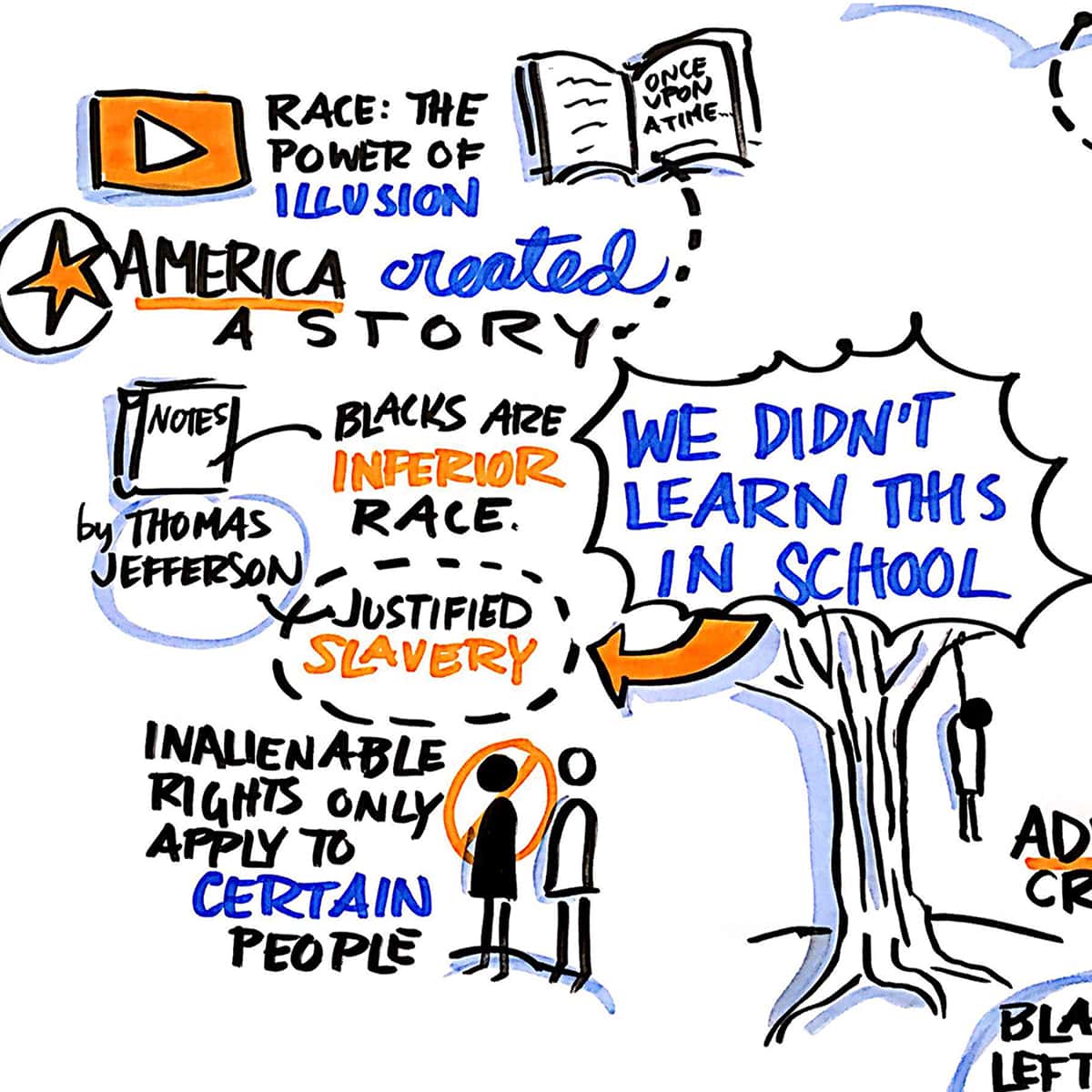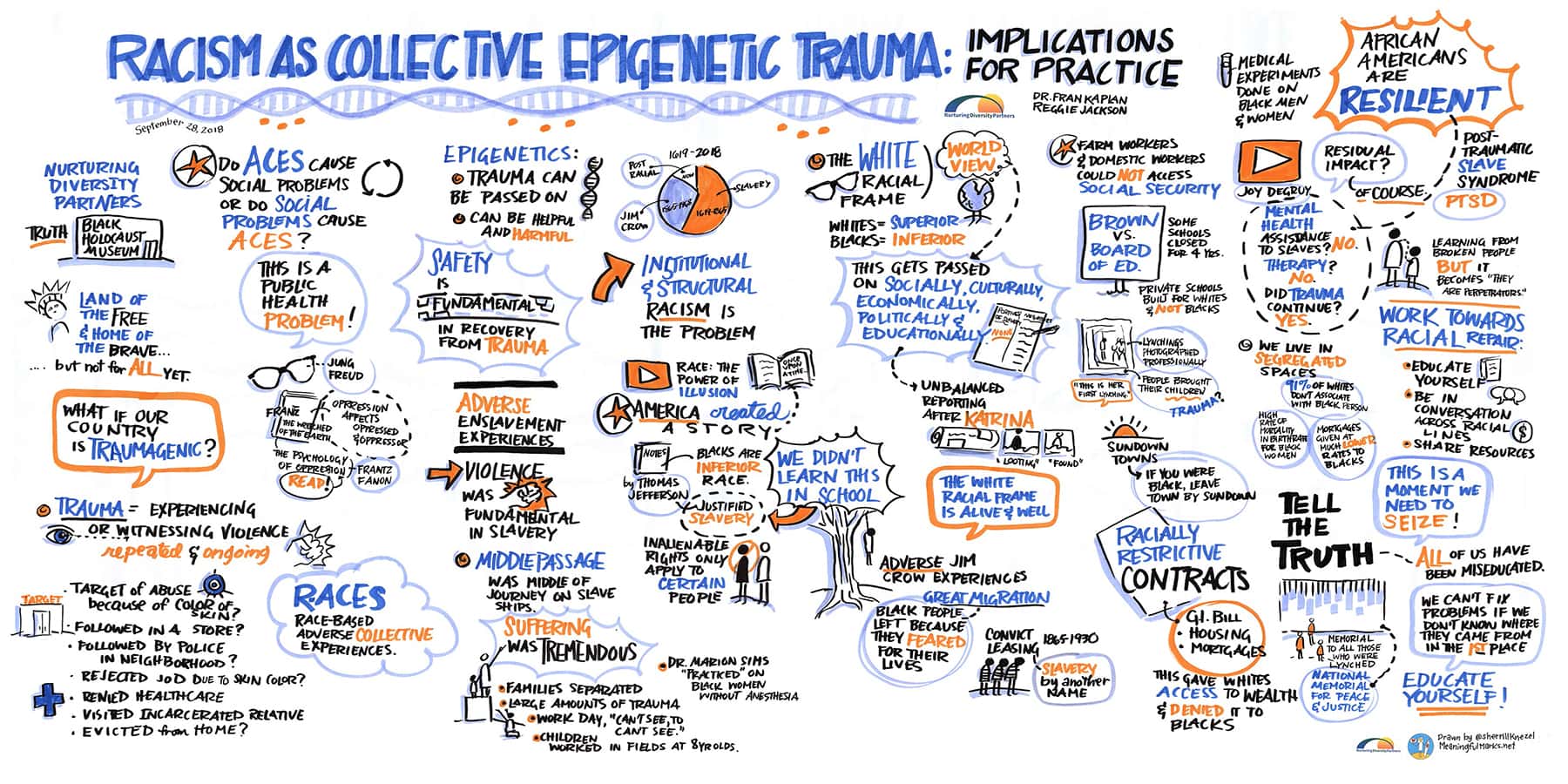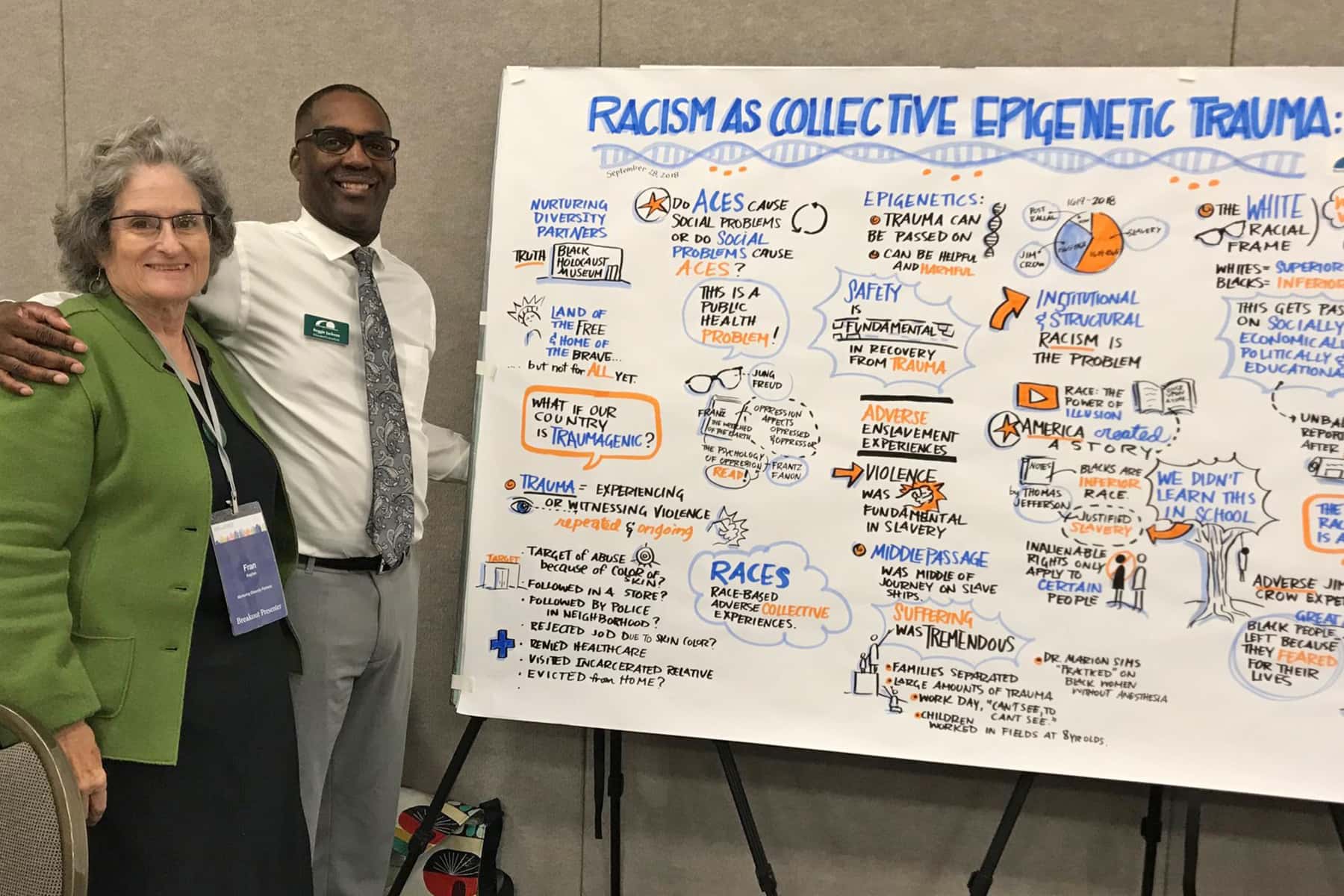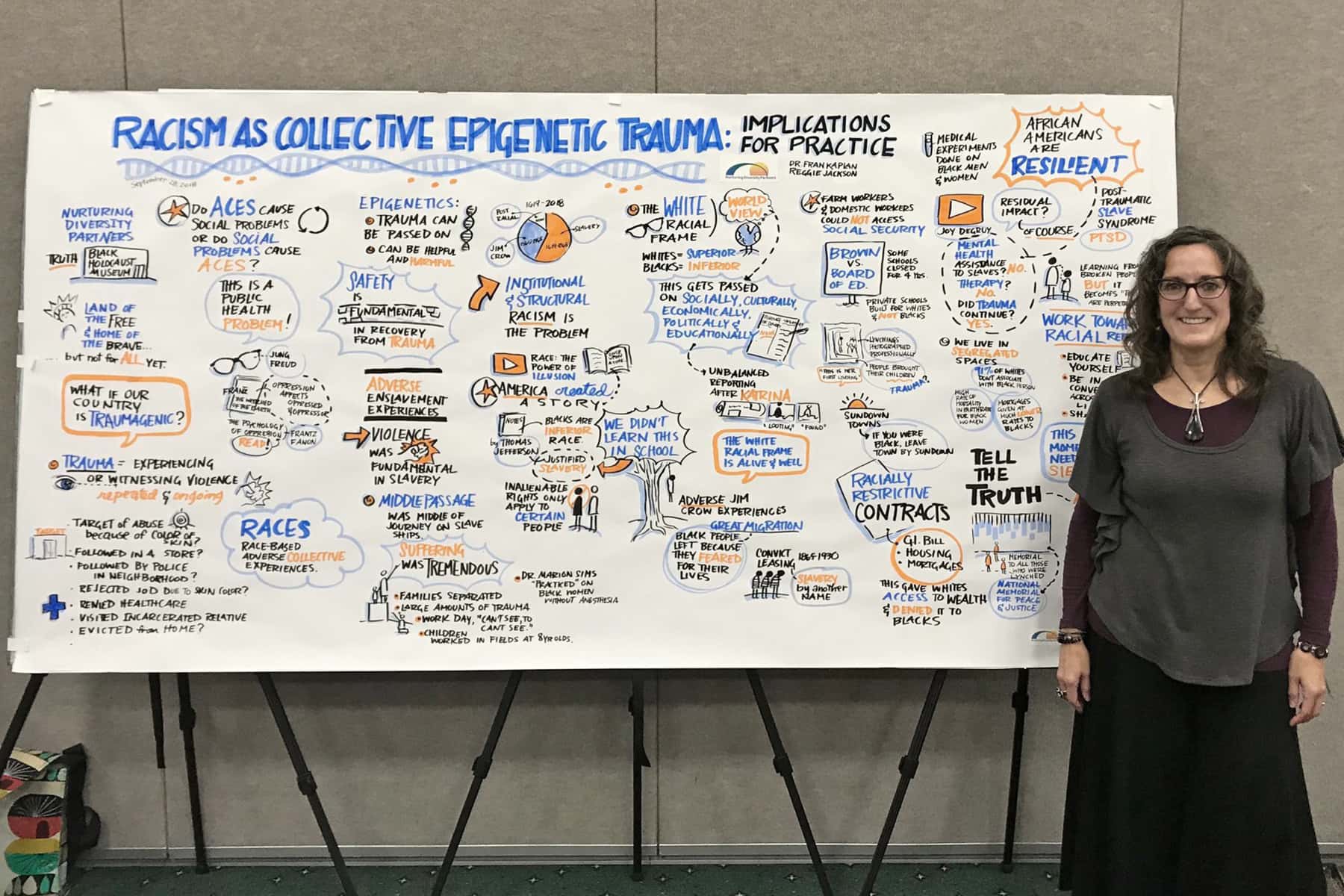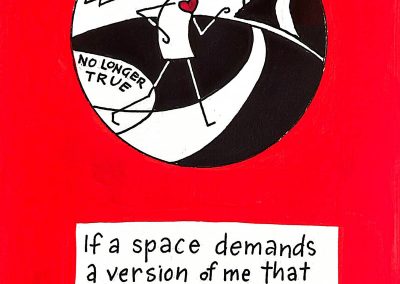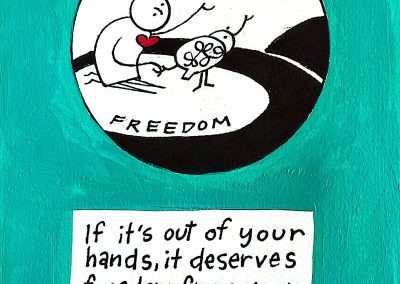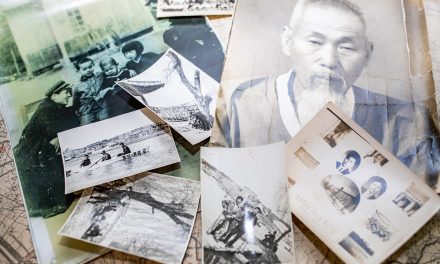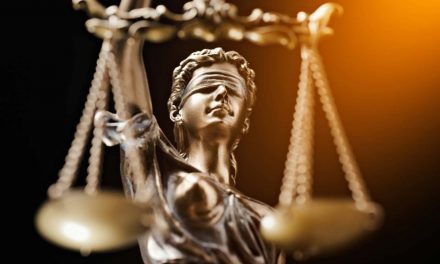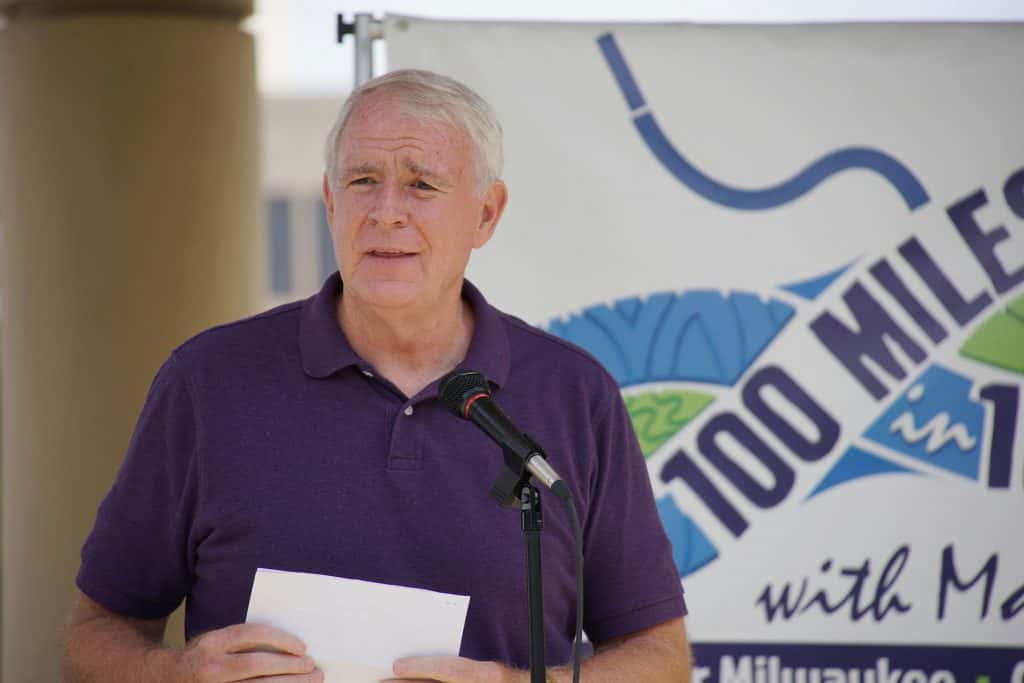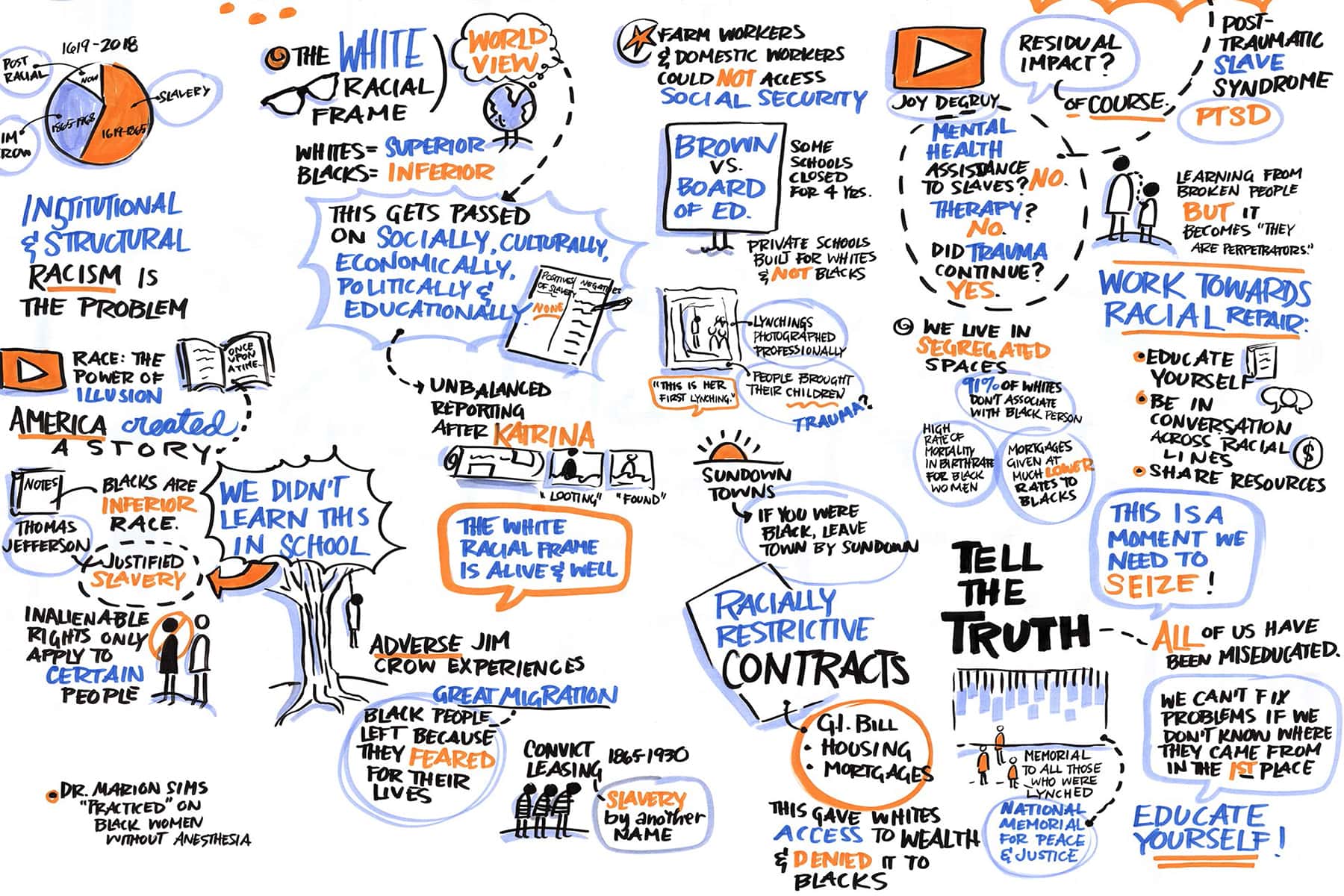
Lately when people ask me what I do, I say, “I am a public listener.”
Technically, I am an art educator, artist, and graphic recorder. I teach elementary art, create “Knezelism” daily illustrations (featured weekly by the Milwaukee Independent), and listen deeply to draw out conversation.
I came to the field of graphic recording through Mike Rohde’s book, The Sketchnote Handbook, and have been on a fascinating journey with it ever since.
Graphic recording has been around for more than 20 years and is called by other names: scribing, graphic facilitation, visual note taking. It is the process of listening to conversation in meetings, keynotes, and conferences, and translating the verbal content, in real-time, into images and text to capture the essence of what is said.
The drawing or chart becomes a colorful, visual artifact of a group’s time together and increases clarity, communication, and connection that can be revisited and shared out to increase impact.
It is the process that called to me from the start. I love listening. I believe that we are here to be in connection with one another, and listening – true, deep listening – is the doorway to that connection. When someone speaks in a room and their words are recorded on the wall, it is a powerful way to be seen and heard.
Graphic recording is more about the listening, than about the drawing. As Mike Rohde writes in his book, The Sketchnote Handbook, “Ideas, not art.” It is often about the spaces and energy between the words, as well.
I have listened and drawn at educational conferences on autism, inclusion, and equity, and illustrated pitch presentations for business development proposals. I have visually documented social entrepreneurial exchanges, community engagement gatherings, and visioning meetings with faith-based communities. However, some of the most meaningful work I have done was more recently at the Healing Trauma, Healthy Communities Conference, sponsored by Scaling Wellness in Milwaukee (SWIM) and hosted by SaintA at the Wisconsin Center.
As a white female educator, I have been reading and reflecting on racism and equity in my own classroom. Part of my learning came through connecting with other educators on Twitter through #ClearTheAir, a group seeking to foster conversation between white educators and educators of color to effect positive change. I began to seek out people in the Milwaukee community doing work around racism and social justice, which is how I met Reggie Jackson and Dr. Fran Kaplan of Nurturing Diversity Partners LLC. We connected over the summer after I heard Reggie’s talk, “The Impact of Segregation” at an educator event at Arts@Large.
Through their partnership at Nurturing Diversity Partners, Reggie and Fran work to “provide education, training, and consulting services that foster diversity, inclusion, and equity within institutions and communities.” When I saw that they were leading a breakout session at the Healing Trauma, Healthy Communities event, we talked about how graphic recording could help attendees interact with, and process, the complex content of their session titled, “Racism as Collective Epigenetic Trauma: Implications for Practice.”
Graphic recording is an exercise in staying present. When a speaker begins, I practice holding space for what needs to get onto the paper and trust that the process will support that happening.
Reggie and Fran bring a wealth of knowledge, passion, and experience to their workshops and trainings, as well as complex and hard truths around trauma and racism. Fran’s social work background and Reggie’s lived experience and historical presentation are dynamic together and make the complex content easier to comprehend.
As their presentation began, I focused on capturing the big ideas and energy reflected in the room, knowing that powerful written words paired with images on the page would further amplify their message. When the content I am recording is complex, I listen for and capture phrases that communicate the essence of what is being said, then add simple images to augment the meaning.
Fran presented trauma theory, which is based on research about Adverse Childhood Experiences (ACEs) experienced by many children in their homes. In this workshop, Reggie and Fran explained the impacts of historical racial traumas on African American adults and children in our society. The presentation’s content around lynching, the white racial frame, slavery, convict leasing, and sundown towns challenged me to visually record the weight of these truths and document the session in a valuable, authentic way.
After the presentation ended, people approached the chart I had just finished. Fascination was their first reaction. Common questions were, ”Did you have notes to follow?” or “Did they tell you what to write or draw?” Many took pictures and I asked about their experience with the graphic recording process.
Some people admitted to having fear that the process would be a distraction. When pushed for more details, attendees shared that it actually had the opposite effect – engaging them more and assisting with the remembering the content. Some of the many values of graphic recording is that it can help people interact with complex and sometimes difficult content in a creative way that increases clarity and connection.
It was an honor to support the work Nurturing Diversity Partners is doing in our community around trauma and racism with graphic recording. When we, as a community, make time to educate ourselves, listen deeply, sit with uncomfortable truths, and have hard conversations, we step closer to healing and doing better.
Listening, trusting, and holding space are the keys to graphic recording. These same practices may be the keys to fostering meaningful conversation around racism and healing trauma in our community as well.
© Art
Sherrill Knezel

